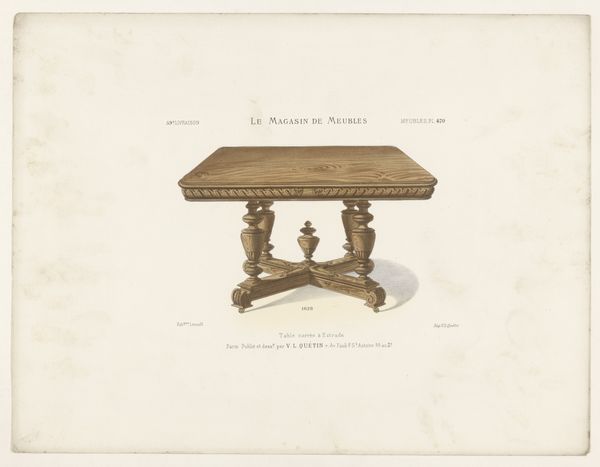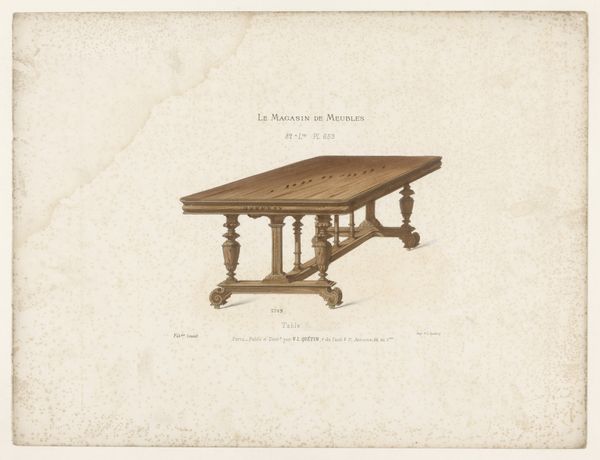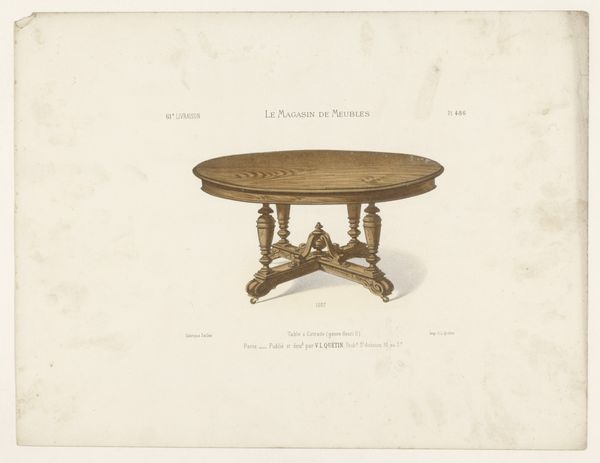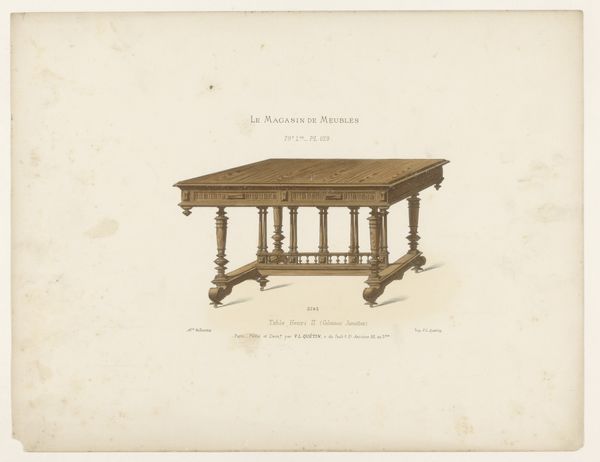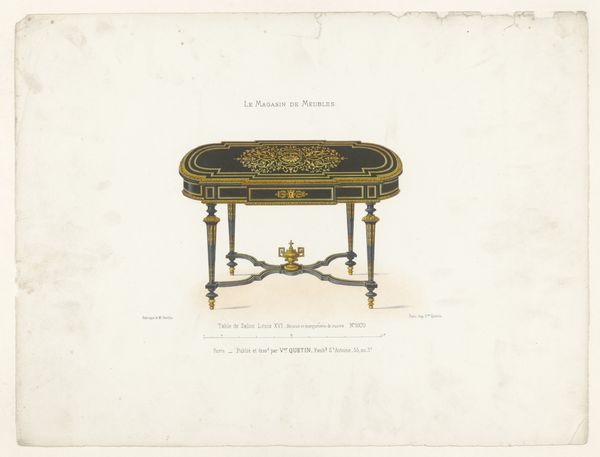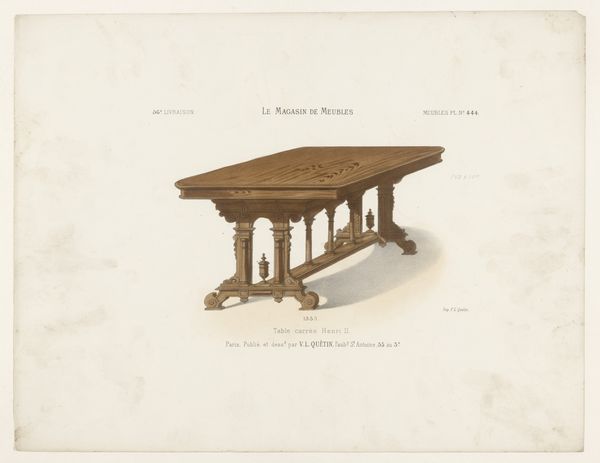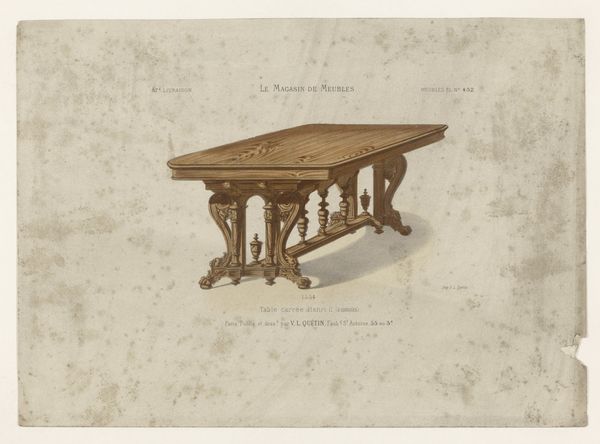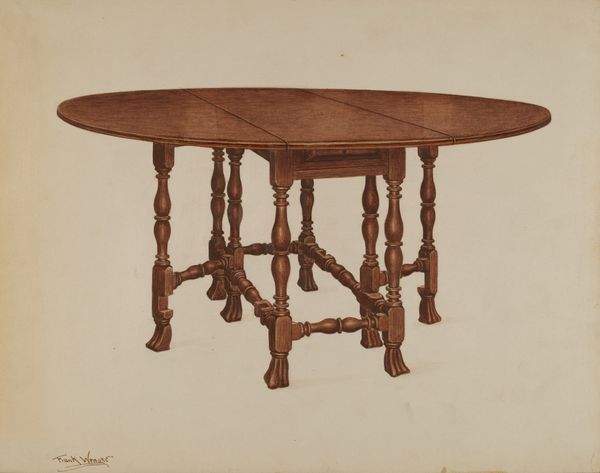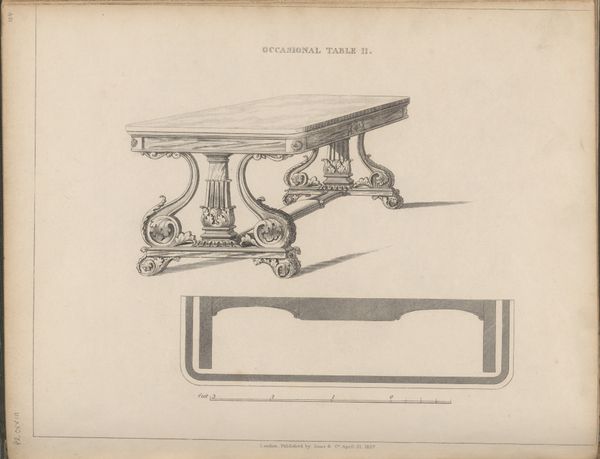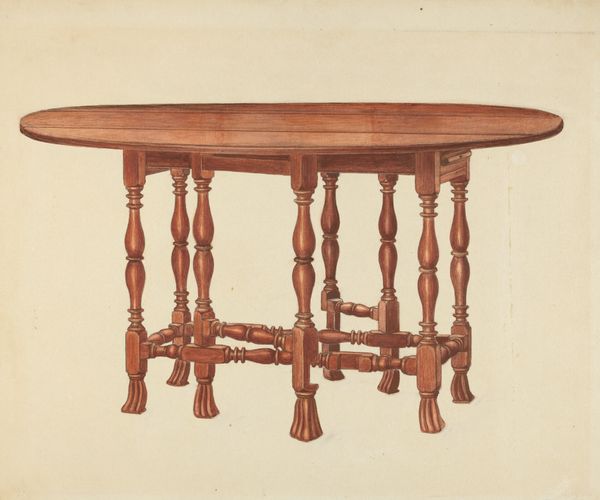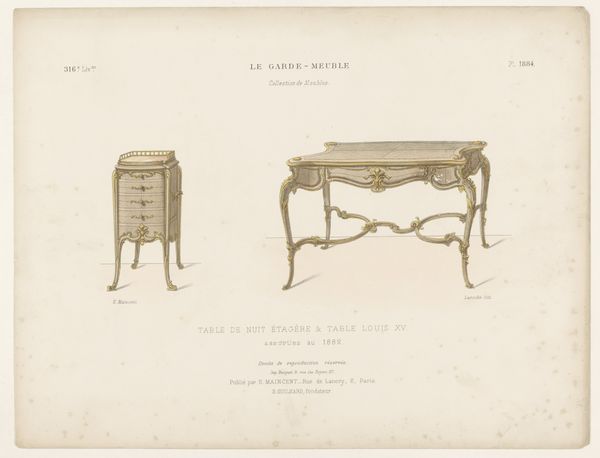
drawing, print, ink, engraving
#
drawing
# print
#
11_renaissance
#
ink
#
decorative-art
#
engraving
Dimensions: height 276 mm, width 361 mm
Copyright: Rijks Museum: Open Domain
Curator: What immediately strikes me is the strange disjunction – two halves of an elegant table, separated. Editor: We're looking at "Tafel," an engraving from after 1878. The artist, who remains anonymous, employed ink to create this decorative rendering of what appears to be a Renaissance-style table. It's a piece brimming with historical and social context regarding perceptions and ideals surrounding domesticity. Curator: Absolutely. The table almost seems to perform a visual deconstruction of itself, laid bare in its duality. The image is dominated by rich ornamental flourishes. Those heavy bulbous legs, those tiny spheres composing the base—they are signifiers of wealth and status, visual cues of prosperity that speak volumes. What cultural meanings would they convey in contemporary society, though? Editor: You're right. In the 19th century, Renaissance Revival signaled a certain cultured aspiration—an evocation of supposed European sophistication. The engraving's precise lines speak to a period keen on rationalizing the aesthetic language of the past for contemporary audiences. Those ornaments that you so wonderfully highlighted appear in all sort of furniture design. What type of symbolic message could you send to visitors to this museum who were of lower economic standing than the purported user of this item. Is this promoting aspirational buying or exclusion, do you suppose? Curator: It is exclusionary to those not of similar economic position in terms of accessibility, perhaps, but its display in a museum might give space to the notion of how we all need space to consume art and beauty—irrespective of monetary constraints or accessibility. I also think about the lack of wholeness here. The separation perhaps implies a social rupture or the fragmentation of tradition? Editor: Possibly a statement about the instability of opulence? That division cleaves its iconic image in two, threatening the illusion of solidity and endurance that such heavy pieces of furniture tend to project. In this context, with no table covering obscuring the visual clarity of each half, all ornament is laid bare and exposed. Curator: Interesting indeed. What seems stable on the surface reveals the complex dance of history, representation, and, of course, class. Editor: Precisely. This has reminded me to reconsider that even seemingly innocuous depictions hold significant cultural and perhaps even subversive meanings. Thank you for this fresh perspective!
Comments
No comments
Be the first to comment and join the conversation on the ultimate creative platform.
